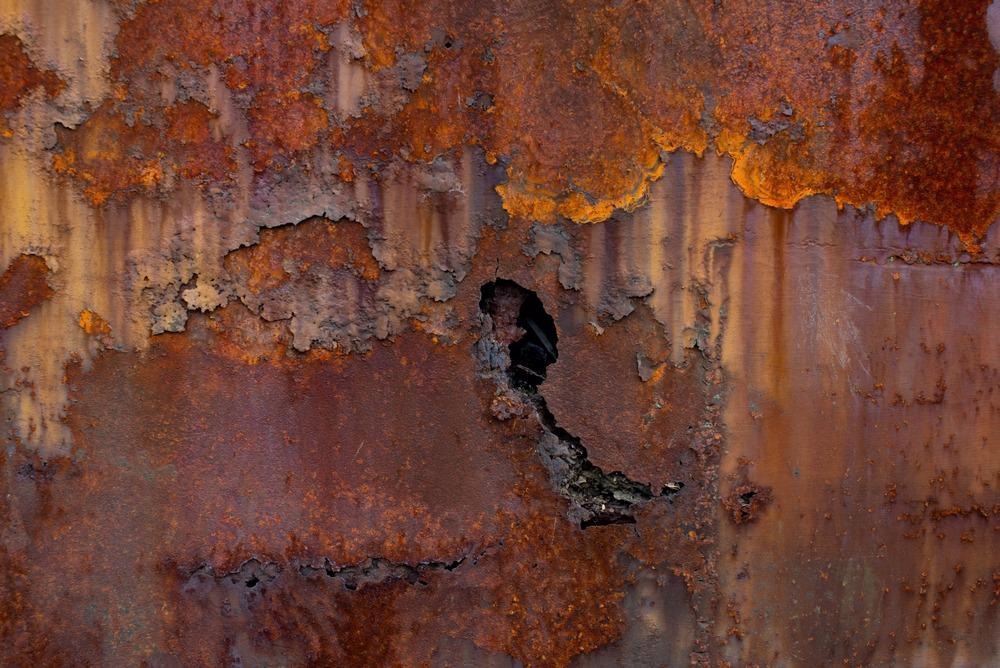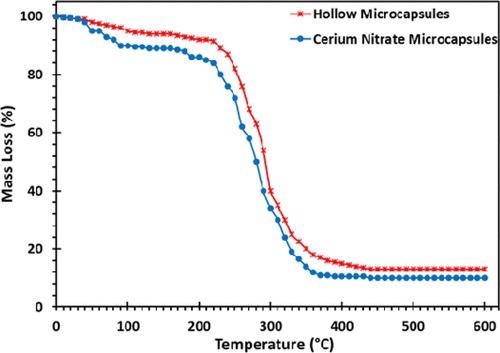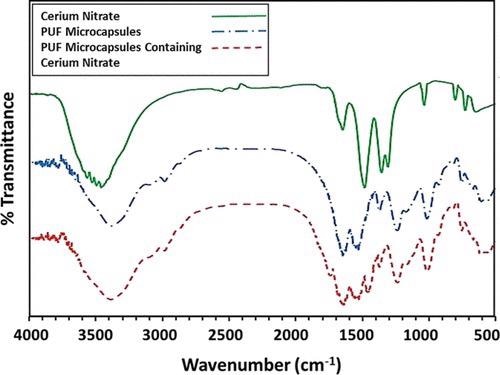Traditionally, coatings have been applied to materials as a way to prevent corrosion and improve surface properties, and even offer long-term economic benefits by improving product durability. The use of cerium nitrate has been explored in the journal ACS Omega.

Study: Encapsulation of Cerium Nitrate within Poly(urea-formaldehyde) Microcapsules for the Development of Self-Healing Epoxy-Based Coating. Image Credit: Quisquilia/Shutterstock.com
However, over time coatings may be vulnerable to defects as a result of persistent exposure to chemical and mechanical stresses; organic coatings, in particular, are known for demonstrating fragility where barrier performance is concerned.
Now, a team of Iran-based researchers has been working with cerium nitrate to improve the barrier performance of organic coatings by introducing self-healing systems as a way to formulate high-performance organic coatings that exhibit anti-corrosive properties and show a long-term protective effect.

Schematic representation of the microcapsule synthesis: (a) addition of the urea pre-polymer and creation of fine pores and (b) microcapsule formation in the vicinity of the pores. Image Credit: Gholamali Farzi et al., ACS Omega
Cerium Nitrate
Cerium nitrate was selected as a known corrosion inhibitor and self-healing properties: “This material can be employed as a highly responsive healing agent in the self-healing performance for organic coatings (i.e., epoxy-based coatings),” explained Gholami Farzi associate professor in polymer engineering and polymer nanocomposites at Hakim Sabzevari University, Iran.
However, one of the major considerations that must be taken into account when using cerium nitrate is that when this material is mixed with an epoxy resin before being applied to a substrate it will be consumed over time.
This means that the material will not deliver on its self-healing capabilities and therefore render the coating itself inadequate. Therefore, its encapsulation is an effective and smart way to maintain the functionality of cerium nitrate for a prolonged period of time.
For the purpose of the study, the researchers encapsulated the cerium nitrate within the poly(urea-formaldehyde) (PUF) microcapsules using a two-step polymerization process. PUF was employed as the capsule shell material.
It was considerably investigated in self-healing applications to protect the healing agents due to the facile preparation of PUF microcapsules along with its thermal and chemical stability and compatibility with the epoxy-based matrix.
Gholami Farzi, Associate Professor, Polymer Engineering and Polymer Nanocomposites, Hakim Sabzevari University, Iran.
Self-Healing Performance
In order to characterize the microcapsule formula, the team employed thermogravimetric analysis and Fourier transform infrared spectroscopy and confirmed the successful encapsulation of cerium nitrate within PUF capsules.
Then, the self-healing performance of the coating was put to the test in sodium chloride (NaCl) solution. The team scratched the coating after it was applied to a metallic substrate and used electrochemical impedance spectroscopy (EIS) to assess the results.
The tests indicated a successful release of the encapsulated cerium nitrate from the PUF microcapsules once the damage had occurred in the coatings and confirmed the effective self-healing performance of the epoxy-based coating.
However, there was a reduction in the adhesion of the coating to the metallic substrate which was influenced by the presence of the microcapsules. The researchers determined that the weight percentage of the microcapsules in relation to the concentration of the self-healing agent is what cause the decrease in adhesion: the optimal weight percentage was calculated at 10%.
The coatings containing 10 wt % of microcapsules showed the best healing performance due to more available cerium nitrate at the damaged sites for healing performance along with blocking of the pathways for electrolyte penetration due to the high volume/weight ratio of microcapsules in the epoxy-based matrix.
Gholami Farzi, Associate Professor, Polymer Engineering and Polymer Nanocomposites, Hakim Sabzevari University, Iran.

TGA curves of PUF microcapsules with/without cerium nitrate. Image Credit: Gholamali Farzi et al., ACS Omega
Self-Healing Coatings
Having demonstrated the capacity to synthesize and develop an effective self-healing epoxy-based coating the researchers have made advanced steps in presenting how new self-healing coatings could be developed which offer excellent application potential.
Self-healing coatings with the ability to heal surface scratches and mesoscopic damage (i.e. microscopic cracks) would facilitate a high degree of scratch repair that could extend the lifetime and use of a wide range of substrates in various applications.
For instance, self-healing coatings could be applied to metallic substrates – as demonstrated in this study – to prevent corrosion and rust formation. Furthermore, the ability to self-heal and intrinsically correct damage means that these coatings could also boost efficiency and prevent recurring costs due to material failure.
Instances, where the use of self-healing coatings could be of significant benefit, include anti-corrosion applications in electronic devices including smartphones and circuit boards, the automotive and transportation industries, aerospace, building, and construction.
The growth rate of the self-healing coatings market is anticipated to reach around 35.98% in the forecast period of 2021 to 2028: this puts the estimated growth value at around USD 45.93 million by 2028. The self-healing coatings market report analyses the growth, which is currently based on the extensive utilization and research being conducted in the self-healing coating industry.

FTIR spectra of PUF microcapsules. Image Credit: Gholamali Farzi et al., ACS Omega
References:
Encapsulation of Cerium Nitrate within Poly(urea-formaldehyde) Microcapsules for the Development of Self-Healing Epoxy-Based Coating. Gholamali Farzi, Ali Davoodi, Ali Ahmadi, Rasoul Esmaeely Neisiany, Md. Khalid Anwer, and M. Ali Aboudzadeh DOI: 10.1021/acsomega.1c04597 https://pubs.acs.org/doi/abs/10.1021/acsomega.1c04597
Global Self-Healing Coatings Market – Industry Trends and Forecast to 2028 (https://www.databridgemarketresearch.com/reports/global-self-healing-coatings-market)
Disclaimer: The views expressed here are those of the author expressed in their private capacity and do not necessarily represent the views of AZoM.com Limited T/A AZoNetwork the owner and operator of this website. This disclaimer forms part of the Terms and conditions of use of this website.